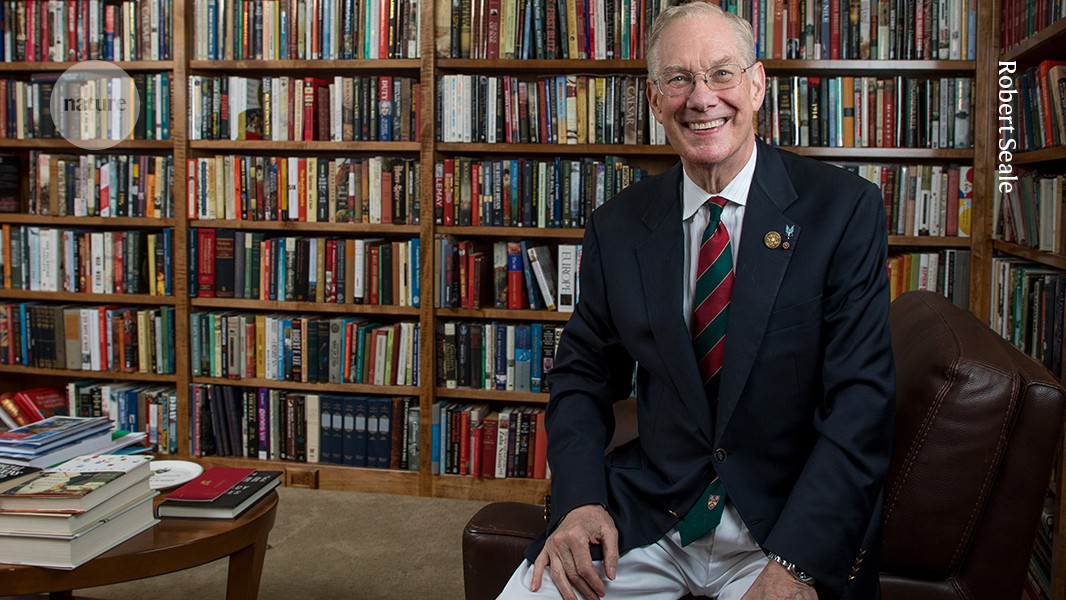V. Craig Jordan obituary: pharmacologist who revolutionized breast cancer treatments

Pioneer of targeted therapy in cancer who turned failed contraceptive tamoxifen into an essential drug for treating breast cancer and osteoporosis

Credit: Robert Seale
The UK–US pharmacologist V. Craig Jordan devised the first targeted therapy in cancer when he discovered that tamoxifen and other compounds that selectively target oestrogen receptors could both treat and prevent breast cancer. When Jordan began his research in the early 1970s, combination chemotherapy was perceived as the only treatment able to kill cancer cells; his concept of a targeted and gentle approach seemed counter-intuitive. Today, selective oestrogen receptor modulators (SERMs) are used to treat a range of conditions, from all stages of breast cancer to osteoporosis, and even symptoms of menopause. Jordan has died aged 76.
Jordan’s work has had an enormous influence, particularly on the lives of women. Breast cancer is the second most common form of cancer, after lung cancer, with 2.3 million cases diagnosed globally in 2022. Osteoporosis is thought to affect around 500 million people worldwide. Women over the age of 50 are particularly at risk because menopause lowers oestrogen levels, decreasing bone density.
Jordan was born in New Braunfels, Texas, in 1947, to an English mother and a US serviceman. She moved back to England with her son when he was three years old. He went on to set up a chemistry laboratory in his childhood bedroom. His biology teacher let him use the school’s lab and teach biochemistry to other students. He also encouraged Jordan to go the University of Leeds, UK, where he would develop a lifelong fascination with oestrogen receptors. Working as a technician at ICI Pharmaceuticals (later part of AstraZeneca) in Alderley Park, Jordan met endocrinologist Arthur Walpole, who held the patent for ‘ICI 46,474’ — which became commercially available as tamoxifen in 1973.
After earning his doctorate in 1972, Jordan, on Walpole’s advice, went to the Worcester Foundation for Experimental Biology in Shrewsbury, Massachusetts, which studied birth-control pills. ICI 46,474 proved to be an ineffective contraceptive; instead, he explored its potential as a breast cancer drug. Using a rat model, Jordan discovered that it halted the growth of tumours with oestrogen receptors.
At the Worcester Foundation, he met biochemist Angela Brodie, and inspired her to also develop a targeted anti-oestrogenic therapy, which works by blocking the enzyme responsible for oestrogen synthesis, aromatase. Selective aromatase inhibitors are now used worldwide to treat breast cancer in postmenopausal people. Connections Jordan made in Worcester also kick-started the process of obtaining FDA approval for tamoxifen, achieved in 1977.
ICI launched tamoxifen to treat late-stage breast cancer in the United Kingdom in 1973. Jordan went back to Leeds as a lecturer in 1974. With funding from ICI, he explored the drug’s role in preventing both the occurrence and the recurrence of early-stage breast cancers. His experiments suggested that treatment over years rather than months produced better outcomes. The medical community was slow to be convinced, but large-cohort trials confirmed that 10 years of tamoxifen treatment in early-stage breast cancer reduced the risk of relapse by 30% and of related mortality by 48%.
In 1977, Jordan found that a metabolite of tamoxifen, 4-hydroxytamoxifen, was even more potent. This opened the door for the synthesis of new SERMS, such as raloxifene, bazedoxifene and lasofoxifene.
In 1980, Jordan joined the Carbone Cancer Center at the University of Wisconsin–Madison, and he was a full professor by the time he left in 1991. There, he found that tamoxifen can encourage the growth of endometrial cancer in some women, sounding the alarms about gynaecological monitoring. In 1987, Jordan made another counter-intuitive breakthrough when he showed that raloxifene could maintain bone density in rats whose ovaries had been removed. The finding was at first rejected by all osteoporosis journals, but he would once again be vindicated by a large-scale clinical trial, in 1999 (S. R. Cummings. et al. JAMA 281, 2189–2197; 1999).
From 2005, Jordan held leading positions in cancer pharmacology at various US universities and hospitals. He continued to elucidate the complex mechanisms behind SERMs. He established a collection of breast cancer cell lines derived from patients, and freely shared it with other scientists.
In 2015, he joined the University of Texas MD Anderson Cancer Center in Houston. There, he unravelled how oestrogen can prompt the self-destruction of breast cancer cells in women who have been oestrogen-deprived for at least five years. He showed that drugs that mimic oestrogen, but avoid its side effects, might therefore be better for people for whom other therapies have failed.
Jordan had a strong sense of service. Inspired by his ex-military grandfather, he joined the officer-training corps while a student at Leeds, and took training courses in nuclear, biological and chemical warfare defence. Before completing his PhD, he was recruited to the UK Intelligence Corps, becoming the youngest captain in the service. He was a reservist for the UK Special Air Service, responsible for advising both the UK and US armies on chemical and biological defence.
Among many other honours, in 2019, the late Queen Elizabeth II appointed Jordan the Most Distinguished Order of Saint Michael and Saint George for his services to women’s health. The world knows Jordan as a trailblazer in women’s health, but those of us who worked closely with him remember him as a down-to-earth scientist who exuded playfulness, kindness and inventiveness.
Nature 632, 25 (2024)
doi: https://doi.org/10.1038/d41586-024-02448-9
This story originally appeared on: Nature - Author:Balkees Abderrahman















